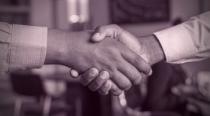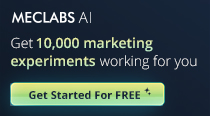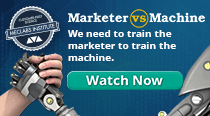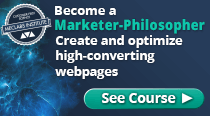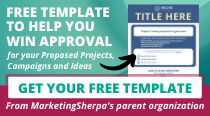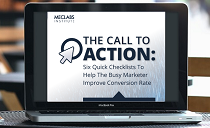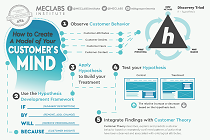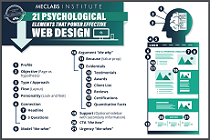CHALLENGE Trade show booths are major expenditures. Buying the space, shipping the booth, flying in personnel to staff it,
printing up marketing materials to hand out. It can add up to a
hefty $150-$350 or more cost per new sales lead generated.
When test automation software firm WorkSoft bought a booth at the STAREAST 2002 Conference scheduled for May 15th 2002, they wanted to make the most of it.
WorkSoft had four challenges you may find familiar:
- Although some of their clients were famous, and their CTO
was a semi-celebrity in the field, the Company itself is
fairly new and few prospects would know the name.
- The show floor included about 50 booths from direct
competitors all battling for attention.
- WorkSoft's pre-show marketing budget to promote the booth
was less than $2000.
- Almost no time. The show organizers gave WorkSoft a copy of
the (snail mail) list of registered attendees just seven
days before the show.
Most marketers in this situation would whip out a "visit our
booth" postcard or self-mailer flyer to the list, with some sort
of prize offer, and leave it at that.
However, Margaret Herndon, Principal Monde Marketing (who handles
WorkSoft's marketing) was itching to test adding a Web component
to the campaign to see if it would be more effective.
CAMPAIGN Herndon split the mailing list into two equal slices.
Each half received a postcard with a different offer. (Link to
sample art below.)
Test Cell A - "Present this card at the WorkSoft booth and
increase your chances to win by 500%!"
Test Cell B - "Increase your chances to win a free Palm by
500% -- register at www.worksoft.com/palm today"
Other than offer, the postcards were absolutely identical in
every way. They were a bit over-sized at 5 1/2" x 8 1/2" to get
more attention while avoiding an oversize postage increase.
(Note: This size is too big for low postcard rates, but avoids
price increases for "oversize" flats.)
Herndon also economized by printing in color just on the front of
the postcard, and leaving the back (where the label and live-
stamp postage were) in black and white.
Herndon knew the average postcard recipient only glances at it
for 2-5 seconds maximum. She did not waste creative space on
long copy or lots of product details. She also did not make the
mistake so many B2B marketers do of putting the "visit our booth"
message in small print almost as an afterthought.
Instead the entire card blasts the visit-the-booth message in a
few high-impact words.
In order to begin branding, Herndon's color choices were dictated
by the colors in WorkSoft's logo and corporate Web site. Plus
she included the official show logo "to help people make a visual
connection between our company and the trade show if they were
just glancing at it."
The postcards mailed 24 hours after she got the list in hand,
just six days before the show.
You may have noticed the Test B postcards did not ask people to go
to WorkSoft's site home page to enter.
That is because Herndon did not want to muddy the test results by
allowing regular site visitors to click on the offer. She also
knew a special landing page would have a much higher campaign
conversion rate than sending people to a home page would, because
there would be less confusion about which site path to take.
Here are eight more of Herndon's landing page tips:
1. Use the same colors as your promotion, so people get a
visual cue that they are in the right place.
2. It is "really important" to reference the promotion offer at
the start of the page so people know they are in the right
place.
3. Lengthy contest explanations and rules should not appear on
this page as they will distract people from entering. Instead
give a very clear link to another page where all the fine
print is. (Note: If you are offering a prize valued at more
than $400, US sweeps law requires you to add this fine print
legal info.)
4. Do not require that visitors click through to another page
to actually enter the registration form. You lose 10% or more
of responses with each click you make people take. Why take
that risk? Put your entry form on the page they first come
to.
5. Do not ask more than 10 questions, including contact info.
The more questions, the lower your response will be.
6. If you are asking more than 1-2 questions, make sure
answers are quick and easy radial buttons or check boxes with
no more than four options for each answer. Anything more
complicated (especially write-ins) will vastly lower response.
7. Do not ask for contact info you do not absolutely need. Fax
number, phone number, street address are all probably
unnecessary because you can get this info elsewhere or do not
require it at this stage of the relationship. Just because
your marketing database has a field for a type of information
does not mean you have to ask respondents to fill it!
8. Do not waste the 'thank you' page that appears after
visitors submit their entry. It is the perfect place to
redirect their attention from your contest to your company's
products.
Herndon created a special 'thank you' page that started with the
headline "We have received your entry" and then gave links to
three different educational resources to impress sales prospects:
links to a series of articles written by WorkSoft's CTO, a PDF
download of the same collection of articles, and a link to visit
the Company's home page.
She also stipulated that entrants had to be present during the
drawing at the booth at the show to win. Learning from a past
mistake, Herndon scheduled the drawing time for a day in the
middle of the show (not the last day when people are leaving) and
at 3:30 P.M., a time when there were no major speeches or workshops
going on and lunch was already over.
For some attendees this would be the first time they saw the
booth, for others it would be a good reminder that the booth was
there.
RESULTS While the regular 'come to our booth to enter' card
pulled a respectable 11% response rate, the 'enter to win
online and then come to the booth to see if you won' offer got a
15% response rate.
The booth itself got about 35% more traffic than it had at the
same show the year before. According to Michael Paris,
WorkSoft Director of Product Services, who manned the booth with
the sales team, "Nobody forgot to come back for the giveaway. At
3:30 the booth was stacked 8-10 deep with people."
Plus, by asking questions such as "How happy are you with your
current program?" the Web-entry form helped the sales team zero
in on the show attendees who were the best prospects.
Herndon explains, "They had extra intelligence about attendees
prior to the show so they were prepped. It's also just good
market data to have."
Useful Links:
Link to samples of two postcards and form thank-you page:
http://www.marketingsherpa.com/creative/palm-campaign.html Link to agency that created the campaign:
http://www.mondemarketing.com/
Direct mail postage info in the US:
http://www.usps.com
WorkSoft: http://www.worksoft.com

